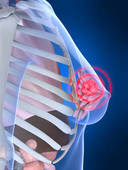
If you've ever been unable to identify a pill, a pill identifier is a useful tool for your home health arsenal. Find out what they are and who can benefit from their use.
Have you ever picked up a prescription at the pharmacy, only to get home and find that the pills in the bottle aren't the same as the ones you usually take? Have you ever found an unidentified pill on the bottom of your purse? If either of these situations have happened to you, then you've had a good reason to use a pill identifier.
A pill identifier can be an online tool or a book that is used to help identify pills that are prescription or and over the counter types. Online versions of the pill identifier usually allow you to search by shape, color, size, or imprint of a pill. Books may classify pills by color, size, and shape as well. The pill identifier can assist you identifying pills before you take them so that you don't take the wrong medication and suffer harmful effects.
There are several popular pill identifiers available online and in print. Physician's Desk Reference, a well-known drug reference handbook, contains a section that shows pictures of pills in different dosages. Online versions are more plentiful, with popular versions found at WebMD, Drugs.com, and RxList.com. These Web sites make it easy for users to enter information and view results based on their input.










